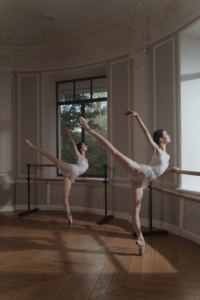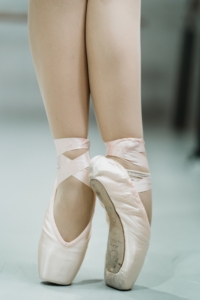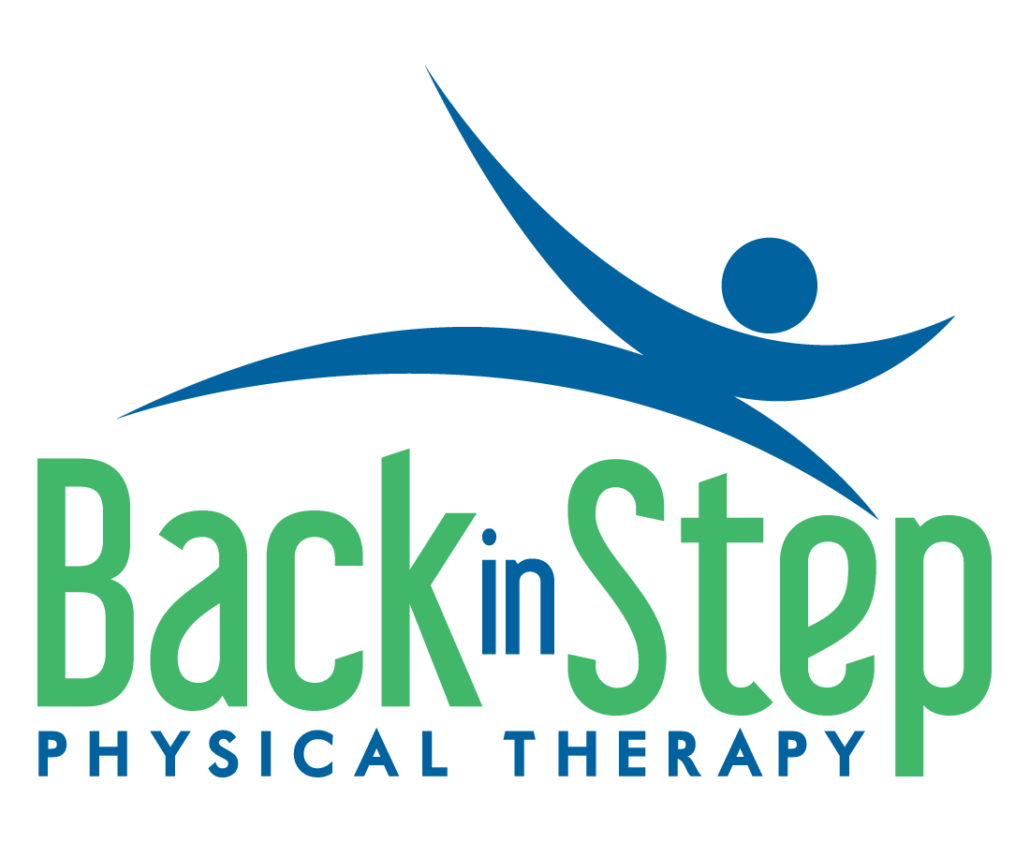More About Your Pointe Shoe
/in The Performing Arts, Uncategorized /by Dr. Alyssa Arms, PT, DPT, OCSFinding the right pointe shoe is a major part of a ballet dancer’s life. We learn how to sew the ribbons & elastics. We build relationships with our fitter, who may be local, fitting virtually, or a long trip away. We learn how to start dancing in the shoes, refining our technique.
With everything that we do learn when it comes to pointe, there are some things that we don’t really talk about or learn about. Keep reading to find out.
EXTENDING THE LIFE OF THE SHOE
Most dancers who dance en pointe should be doing at least a couple of hours of ballet per week, some of which will include pointe work. We all know that when we’re working, feet get sweaty. That moisture builds up in the shoes and can start to contribute to the breakdown of the material inside of a pointe shoe.
Watch the fascinating way pointe shoes are made in the video above.
If you’re only doing pointe for short periods 1-2 times per week, you probably get plenty of time for the shoes to dry out between uses, keeping your shoes in good shape for longer.
But if you’re dancing in the same shoes for multiple hours a week, you may want to consider having more than one pair of shoes to let each one have a chance to full dry between uses.
DIFFERENT POINTE SHOES FOR A DIFFERENT GOAL
Dancers are often on the hunt for the elusive “perfect fit” of their pointe shoes. It can take several tries of different brands, styles, and shoe characteristics to find what fits best.
But did you know that there can be more to it than that?
If you’re dancing en pointe quite a bit, it may actually be beneficial to have more than one pair of pointe shoes, not just for what we talked about in the section above. You may want a different shoe for different uses (performance vs class) or to let you work on different things (foot or core strengthening vs balance).
It’s not just about fitting the shoe to the foot – although that definitely is an important part!

Let’s first talk about a couple of scenarios that you might encounter.
If you’re performing in a ballet with quite music, you don’t want loud shoes that you’ll hear from a mile away. You’d want something lighter, perhaps with a softer shank or a different material. Maybe you want a box that’s a bit more broken in. More pleats or a shoe that has a foam-like material built in can also help the shoe be quieter.
For a piece that requires a lot of pirouettes and balance on pointe, a harder shoe with a more substantial platform is helpful, as you’ll get more support.
Choose a shoe that best serves your purposes for a given performance or audition.

Now let’s talk a bit about how a couple of different shoe characteristics help you build strength, gently return to dance after an injury, or something else. These are just a few examples. Each element of a pointe shoe has its pros and cons for an individual dancer.
THE PLATFORM
A small platform is the hardest to balance on but requires less strength for rotation on the platform. Meanwhile, a large platform is easier to balance one but requires more strength for rotation.
A platform with rounded edges is easier to roll through smoothly but it’s harder to find the center of the box for balancing. This decrease in stability can more other muscles in the body, like around the hips & core, work harder to maintain alignment. A flat platform essentially has the opposite effect.
Then there are tilted platforms. These are fine if you have strong ankles. They’re not a good choice if your feet are more flexible or still need to build strength.
THE SHANK
A soft shank tends to be lighter and therefore quieter but don’t give as much support and are more likely to break in quickly. These shoes may be a good choice for a show, for example.
On the opposite end of the spectrum, a hard shank tends to be heavier and lower, but last longer. These are good for something like classes – able to hold up longer and get more wear.

WORK WITH A PROFESSIONAL
At the end of the day, there are a LOT of things that need to be considered when it comes to finding the right pointe shoe.
You want something that feels comfortable and gives you the right support in the right areas. A good fitter will also consider things like foot structure or medical diagnoses. This could include bunions, more flexible feet, or whatever the case may be.
Talk with your fitter. Let them know if you’re struggling with an aspect of your current shoes. Let them know if you’re still returning from an injury. Talk about needing a quieter shoe for an upcoming performance. They’ll give you recommendations to find the right shoe for you and for your specific needs, whatever they may be.
You may also find some dance specialists in the health and wellness world, like Dr. Alyssa here at Back in Step PT, who have had training in at least the basics of pointe shoe fitting. These individuals can also make suggestions about certain characteristics to consider or to discuss with your fitter.
Book a session with us at Back in Step PT!
Hypermobility & Dancers
/in Health & Wellness, The Performing Arts, Uncategorized /by Dr. Alyssa Arms, PT, DPT, OCSCNN recently published a wonderful article about hypermobility and, more specifically, a diagnosis called Ehlers Danlos Syndrome.
Hypermobility is something often seen in the dance community, and all too often, it’s undiagnosed.
What is hypermobility?
Generally speaking, hypermobility just means that the joint moves more than what is expected. This is completely normal for little kids, whose flexibility decreases as they get older.
But that’s expected. It’s when we’re seeing that beyond early childhood that we start to get more interested.
These individuals may be more flexibile, bendy, or say they’re double-jointed. People can be extra flexible and have no other symptoms. Others may have a list of things that go along with it.
Hypermobility in Adolescents & Adults
There are many different types of hypermobility, some of which have genetic component Some types have impacts like bone fragility (osteogenesis imperfecta) or changes in facial struction (stickler syndrome), for example.
Others have joint hypermobility as the main focus, but certainly not as the other symptom. These include categories like Hypermobility Spectrum Disorder, Joint Hypermobility Syndrome, and Hypermobile Ehlers-Danlos Syndrome.
For this group of diagnoses, hypermobility is just one piece of the puzzle. Often times, though, these individuals may expierence things like:
- Chronic fatigue
- Headaches
- Bruising easily or trouble healing wounds
- Stomach & digestive problems
- Bowel & bladder problems
- Autonomic dysfunction, including postural tachycardia syndrome (POTS), dizziness, fainting, etc.
- Mast cell activation syndrome (MCAS), which includes allergy-type symptoms
Many other symptoms or presentations may exist within the different types of hypermobility disorders, but the list above are some of the more common ones.
Hypermobility in Dancers
It can be challenging to identify some of our dancers with hypermobility, especially since dance is a sport & art form that often demands flexibility and is a big part of training.
These dancers may say that they work on stretching all the time but they still feel tight. They may also be a dancer who gets injured often or has health issues frequently.
Common injuries related to joint instability are be hyper-extension sprains or strains, joint subluxations or dislocations.
These may also be the dancers that have trouble with coordination or certain technique. With unstable joints, it’s harder to get good information from their proprioceptive system – the one that tells our brain where each part of our body is in space. That lack of good information means the dancer isn’t aware of how pointed their foot is or have trouble balancing, for example.
A dancer with hypermobility (diagnosed or not) may have their dance careers impacted by the joint instability or other symptoms. It is helpful to get the diagnosis and the support to help manage it.
Common Challenges
Hypermobility disorders, especially ones like Ehlers-Danlos (EDS), often go way too long without a diagnosis. It’s all too common to hear stories about people getting diagnosed in their 40s or 50s, seeing doctors for years for the various symptoms, and experiencing so much frustration.
With some of these diagnoses, other life-affecting problems abound, like gut issues, allergy-like symptoms, anxiety & other mental health issues – the list goes on.
According to the Ehlers-Danlos Society, the average time to diagnosis can be 10-12 years. One study also showed that 20% of EDS patients have seen more than 20 doctors while trying to get a diagnosis.
Why this is important
Although there currently is no cure for EDS or other hypermobility disorders, there are things that can be done to support those with the diagnosis.
There are a growing number of resources available to help, including specialists who focus in this area. These specialists can help with supportive nutrition plans, ways to work on physical health while maintaining joint safety, and so much more.
At Back in Step PT, we’ve seen many cases of young dancers with suspected or diagnosed hypermobility disorders. We’re hear to support you and help you get some answers.
Back In Step Physical Therapy
6551 S Revere Pkwy, Ste 215
Centennial, CO 80111
(303) 960-2075
info@backinsteppt.com
